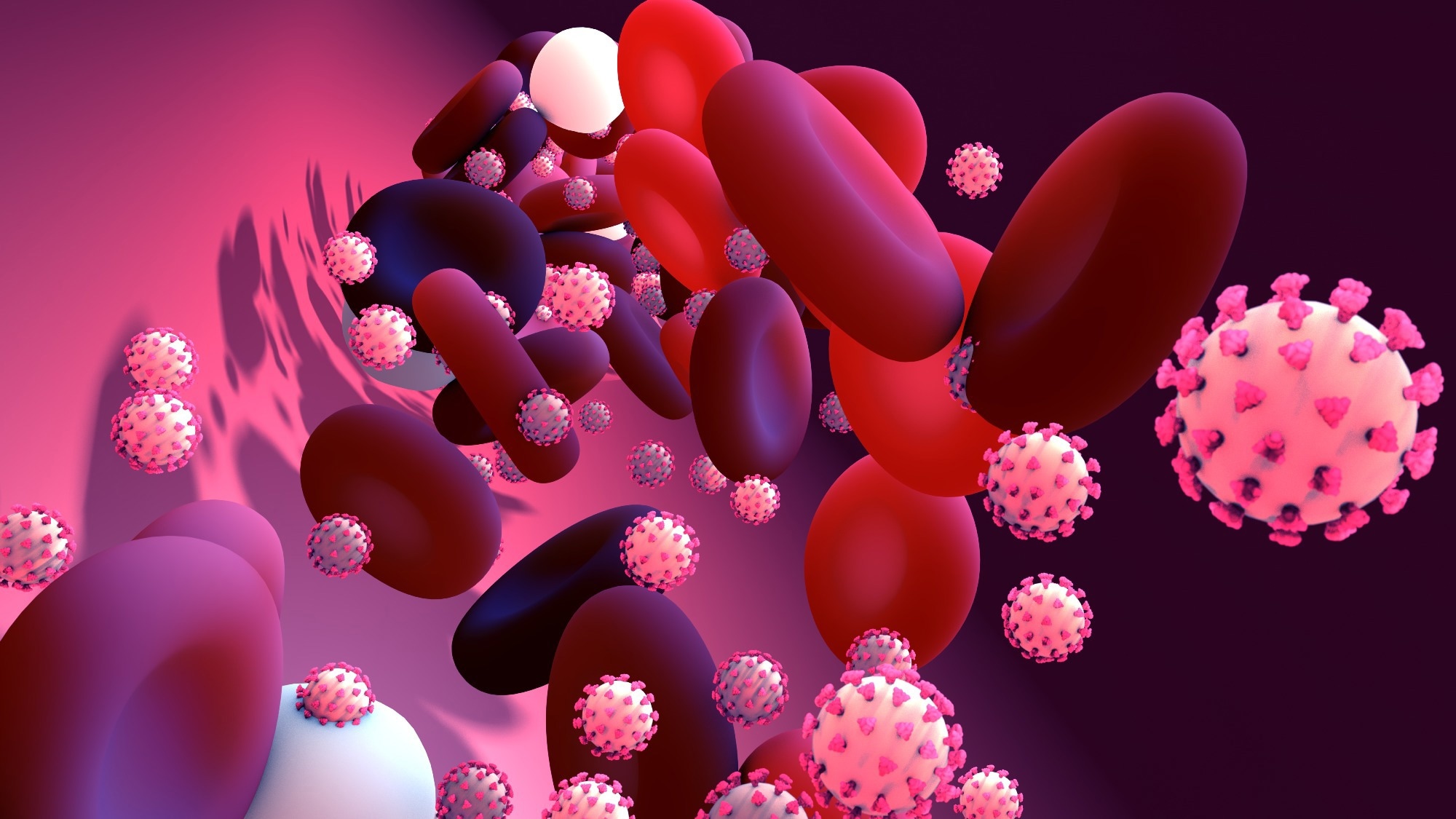In a latest research revealed within the journal , researchers carried out a cohort research between January 1, 2020, and December 31, 2021, in British Columbia, Canada, to evaluate the affiliation between extreme acute respiratory syndrome coronavirus 2 (SARS-CoV-2) an infection and incident diabetes.
Research: . Picture Credit score: Design_Cells / Shutterstock
Background
Throughout its acute section, SARS-CoV-2 an infection primarily impacts the respiratory system. In the long run, it results in varied acute and power sequelae through which different organ techniques would possibly become involved. Research recommend that SARS-CoV-2) an infection is likely to be related to worsening signs in people with diabetes.
Nevertheless, it’s unknown whether or not coronavirus illness 2019 (COVID-19) is related to transient hyperglycemia throughout energetic an infection or whether or not these metabolic alterations persist over time, rising the danger of incident diabetes amongst contaminated people. Most revealed research evaluating the affiliation between SARS-CoV-2 an infection and incident diabetes used comparatively small samples and fetched restricted end result ascertainment.
In regards to the research
Within the current research, researchers used population-based registries and administrative knowledge units of the British Columbia COVID-19 Cohort, a public well being surveillance system, to guage the potential affiliation between COVID-19, its severity, and diabetes incidence. This method encompasses knowledge on the outpatient division (OPD) and emergency division (ED) visits, hospitalizations, pharmaceuticals, power well being situations, and different important statistics of the British Columbia inhabitants.
As well as, the group computed the population-attributable fraction (PAF) to estimate the population-level burden of diabetes attributable to COVID-19 whereas controlling for potential confounders.
All eligible grownup (aged ≥18 years) individuals examined COVID-19-positive through the research length on a real-time reverse transcription-polymerase chain response (RT-PCR) assay. The group created a matched management cohort with individuals who examined COVID-19-negative primarily based on sociodemographic variables, corresponding to gender, age (±3 years), and RT-PCR pattern assortment date (±7 days) at a 1:4 ratio. Different covariates measured on this evaluation have been preexisting power situations and vaccination standing.
The first publicity and end result of curiosity have been RT-PCR–confirmed COVID-19 and incident diabetes, recognized almost a month after the index date, i.e., the RT-PCR pattern assortment date, to the earliest identification of any of the research end result, affected person loss of life, or finish of the research.
The researchers calculated occasions of incident diabetes and person-days for every research group, which they used to compute diabetes incidence charges, i.e., variety of occasions/100,000 person-years. They used the Kaplan-Meier methodology to attract cumulative incidence curves and Cox proportional hazards regression fashions to check diabetes threat in all individuals attributable to their publicity standing, accounting for matched knowledge.
Outcomes
The ultimate analytic pattern of this research comprised 629,935 people with a median age of 32 years. Of those, 51.2% have been females, and the remaining have been males. The variety of people uncovered to SARS-CoV-2 was 125,987, whereas the remaining 503,948 people remained unexposed.
The group adopted up with all of the research individuals for a median of 257 days. They recorded incident diabetes occasions amongst 2472 people, together with 608 (0.5%) uncovered people and 1864 (0.4%) unexposed people. Amongst people with incident diabetes, 1393 have been females, and 1079 have been males.
Within the research cohort, the incidence diabetes price per 100,000 person-years was markedly increased within the uncovered vs. unexposed group (672.2 vs. 508.7 incidents; 95% CI), with an general adjusted hazard ratio (HR) of 1.17. The authors famous an affiliation between COVID-19 and an elevated threat of incident diabetes. On the inhabitants degree, it contributed to a 3% to five% extra burden of diabetes, which is likely to be sufficient to overburden healthcare techniques.
Additional, the authors famous a correlation between SARS-CoV-2 publicity and non–insulin-dependent diabetes solely in sensitivity evaluation classifying diabetes as insulin-dependent and insulin-independent, with HR=1.17. Moreover, the vaccine status-stratified evaluation instructed a correlation between SARS-CoV-2 publicity and incident diabetes within the unvaccinated cohort however not in partially and absolutely vaccinated cohorts.
Conclusion
This massive, population-based cohort research demonstrated that SARS-CoV-2 an infection was related to the next threat of incident diabetes general. Male intercourse and illness severity additional heightened the danger of diabetes in all individuals, regardless of gender. Thus, it highlighted that public well being companies and clinicians should stay conscious of the potential long-term COVID-19 sequelae and repeatedly monitor SARS-CoV-2-infected people for new-onset diabetes to supply them with one of the best and most well timed prognosis and remedy.
